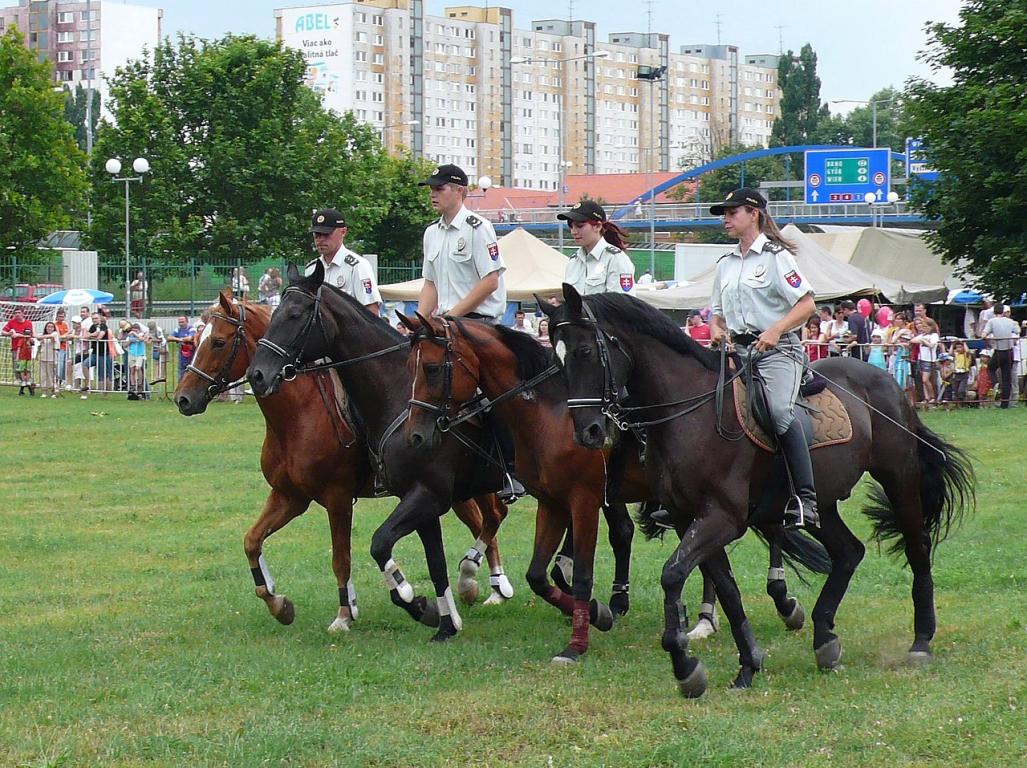
Continent: Europe
Country: Slovakia
Weight: 500 – 600 kg
Height: 159 – 180 cm
The Slovak Warmblood, known in Slovak as Slovenský teplokrevník, is a sport horse breed developed in Slovakia starting in the 1960s. Organized breeding began in 1961, under the guidance of the National Stud Farm of Topoľčianky, with the goal of creating a versatile warmblood horse suited for modern equestrian disciplines.
The breed originates from a combination of Austrian and Hungarian warmbloods, Thoroughbreds, Arabian horses, and various Central European half-bloods. The Slovak Warmblood is the result of a methodical breeding program aimed at combining power, elegance, and sporting performance.
The Slovak Warmblood is bred mainly in Slovakia, with a major center at the National Stud Farm of Topoľčianky, located in the Nitra region. This stud manages the official stud-book and plays a central role in breeding selection. The breed is also raised in other rural areas of Western and Central Slovakia, where natural and agricultural conditions support the development of high-quality sport horses.
Slovakia has a temperate continental climate, with hot, dry summers and cold, snowy winters, especially in mountainous regions. Temperatures range from -5 °C in winter to over 25 °C in summer, creating marked seasonal contrasts. These conditions, combined with rich pastures and varied terrain (plains, hills, and mountains), have favored the development of hardy, adaptable horses.
As a result, the Slovak Warmblood has been shaped by a demanding natural environment, which gives it both stamina and sporting versatility, qualities highly sought after in modern equestrian disciplines.
The Slovak Warmblood holds a key position in Slovakia's equine sector, where it represents the country’s main national sport horse breed. Created through carefully selected crossings between Central European warmbloods, Thoroughbreds, and Arabian horses, it forms a balanced genetic reservoir combining energy, elegance, and strength.
Its genetic value lies in its sporting versatility, making it a valuable base for improving performance in disciplines such as show jumping, dressage, and eventing. By incorporating bloodlines from other European stud-books, the Slovak Warmblood has maintained a sufficient genetic diversity while developing a distinct morphological type suited to modern rider expectations.
Today, it remains a strategic breeding resource to maintain and develop a population of horses in Slovakia capable of competing with the leading international warmbloods.
The Slovak Warmblood was developed in Slovakia from the 1960s, with the official stud-book established in 1961. Breeders aimed to produce a versatile sport horse able to compete with the major European warmbloods.
The breed was created from crosses between:
– Austrian and Hungarian warmbloods
– Thoroughbreds
– Arabian horses
– and various Central European half-bloods
This mix aimed to combine elegance, power, and endurance, while shaping a harmonious morphological type suited to athletic performance.
Development and management of the stud-book were entrusted to the National Stud Farm of Topoľčianky, which remains today the main breeding and selection center. Thanks to strict methodology and performance evaluation, the Slovak Warmblood has steadily improved in quality and recognition.
Before the 1993 split of Czechoslovakia, the Slovak Warmblood shared its history with the Czech Warmblood. After gaining independence, Slovakia continued its own breeding program, solidifying the identity of the Slovenský teplokrevník as a national breed.
Today, the Slovak Warmblood is mainly valued in dressage, show jumping, and eventing. Although still relatively unknown internationally, it represents a growing national heritage, and a horse that embodies Slovak equestrian expertise.
The Slovak Warmblood stands out for its balanced character, highly sought after in sport horse breeding. It combines a degree of liveliness, essential for competition, with self-control.
This is a horse with steady energy, able to sustain effort without becoming difficult to manage. Its reactivity makes it a reliable partner for both dressage and show jumping.
Raised in group pastures, it retains a naturally sociable disposition. This makes it easier to integrate into riding schools or mixed breeding programs.
Selected for its strength and durability, the Slovak Warmblood enjoys good athletic longevity, making it a favorite for riders seeking a reliable partner.
“The Slovak Warmblood is a sporty and balanced horse, combining energy, reliability, and sociability.”
The future of the Slovak Warmblood depends on Slovakia’s determination to preserve a national breed capable of competing with major European warmbloods such as the Hanoverian, Holsteiner, and KWPN. Breeding continues to focus on producing versatile and competitive horses, suited to top-level sport disciplines such as show jumping, dressage, and eventing.
However, the breed remains relatively unknown internationally, limiting its visibility compared to globally recognized bloodlines. Breeders are therefore working to increase its recognition by participating more actively in international competitions, while maintaining rigorous selection standards within the stud-book.
Thanks to the centralized management of the Topoľčianky Stud and to genetic improvement programs open to external influences, the Slovak Warmblood has a solid foundation for future growth. Its prospects lie in greater international promotion, modernization of breeding practices, and enhanced recognition of its role as a national equine heritage.
The Slovak Warmblood is bred with a focus on soundness and long-term athletic ability. Like most European warmbloods, it has no known predisposition to serious hereditary diseases.
– Conformational defects: particular attention is paid to limb structure to avoid issues that could impact performance.
– Tendinitis and joint stress: as a sport horse exposed to intense work, it can be predisposed to tendon and joint issues, especially in the hind limbs.
– Wear from training: horses used in show jumping or intensive dressage may develop musculoskeletal disorders without proper conditioning and veterinary oversight.
Overall, thanks to rigorous stud-book management and careful selection, the Slovak Warmblood is considered a solid, trustworthy horse, well-suited to high-level sport.